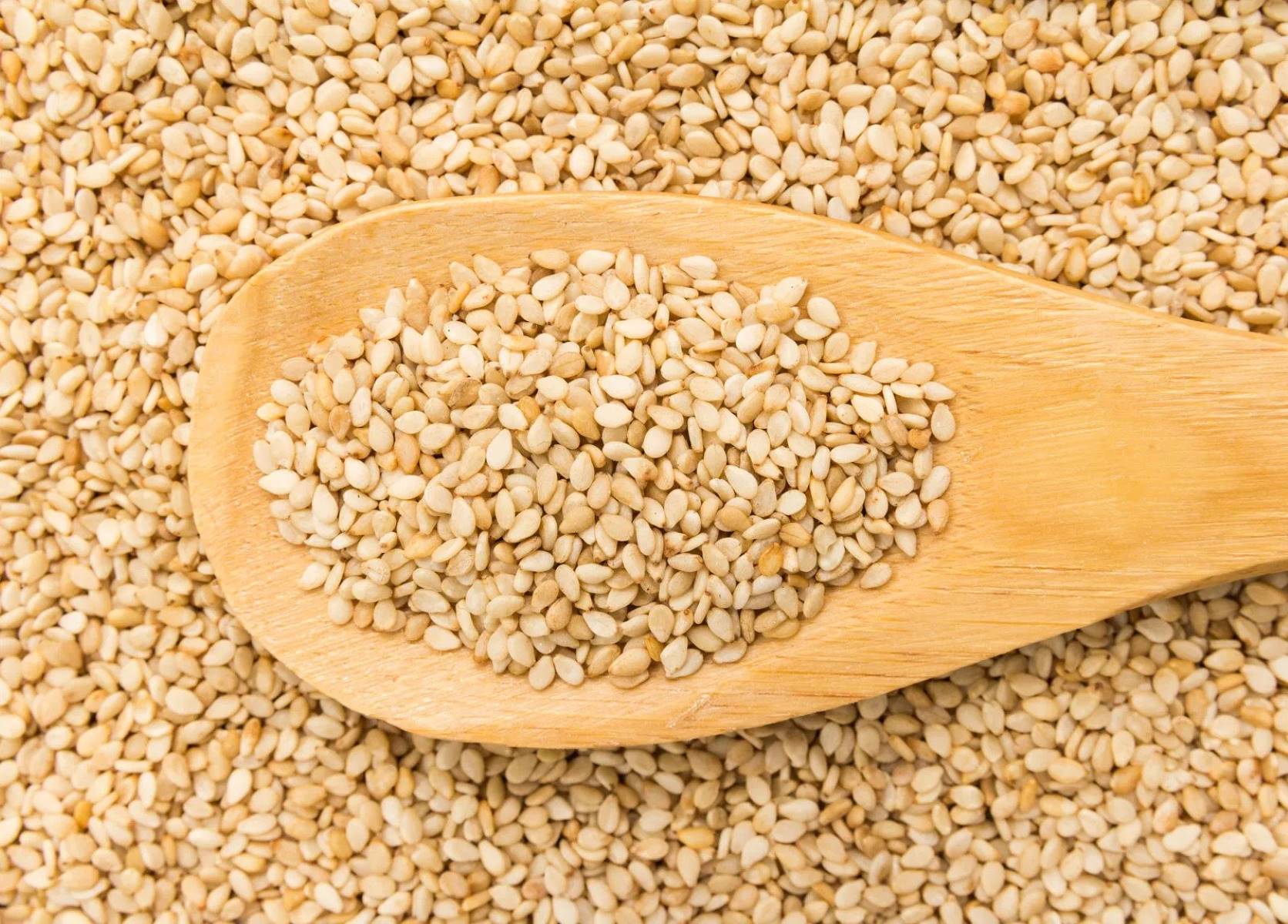

Articles
How To Store Sesame Seeds
Modified: May 6, 2024
Learn the best methods for storing sesame seeds with our informative articles. Discover how to keep your sesame seeds fresh and flavorful for longer periods.
(Many of the links in this article redirect to a specific reviewed product. Your purchase of these products through affiliate links helps to generate commission for Storables.com, at no extra cost. Learn more)
Introduction
Sesame seeds are a versatile and nutritious ingredient used in a variety of cuisines around the world. From bakery items to snacks and condiments, these tiny seeds add a delightful crunch and nutty flavor to dishes. However, to fully enjoy the benefits of sesame seeds, proper storage is crucial.
Storing sesame seeds correctly can help maintain their freshness, flavor, and nutritional value for an extended period. Whether you are buying sesame seeds in bulk or have leftovers from a recipe, following the right storage practices will ensure that your sesame seeds remain delicious and usable for a long time.
In this article, we will explore the best methods to store sesame seeds and understand how environmental factors can affect their longevity. So, let’s dive in and learn how to keep your sesame seeds fresh and flavorful!
Key Takeaways:
- Proper storage is crucial for preserving the freshness, flavor, and nutritional value of sesame seeds. From choosing high-quality seeds to selecting the right container and avoiding heat and moisture exposure, following the best storage practices ensures long-lasting usability and enjoyment of these versatile ingredients.
- Roasting sesame seeds not only enhances their flavor but also extends their shelf life. By creating a protective barrier on the seeds, roasting delays spoilage and allows for prolonged usability. Enjoy the delightful crunch and rich, toasty flavor of roasted sesame seeds in a variety of dishes.
Read more: Where Are Sesame Seeds In Grocery Store
Choosing and Buying Sesame Seeds
Before we delve into the storage techniques, it’s important to know how to choose and buy high-quality sesame seeds. Here are some tips to keep in mind:
- Opt for whole sesame seeds: Whole sesame seeds have a longer shelf life compared to pre-ground or pre-roasted seeds. By choosing whole seeds, you can ensure that the natural oils and flavors are preserved.
- Look for freshness: When buying sesame seeds, check the packaging for the date of production or expiration. Fresher seeds will have a stronger aroma and better flavor.
- Consider organic and reputable brands: Organic sesame seeds are free from pesticides and other harmful chemicals. Additionally, purchasing seeds from well-known and trusted brands can ensure quality and reliability.
Once you have purchased your sesame seeds, it’s time to store them properly to maintain their freshness and integrity. Let’s move on to the next section to understand the best storage practices.
Storing Sesame Seeds
Proper storage is essential to preserve the flavor, texture, and nutritional value of sesame seeds. Here are some important factors to consider when storing sesame seeds:
Proper Container Selection
Choose a container that is airtight and moisture-proof. Glass jars with a tight-fitting lid or food-grade plastic containers with a secure seal are ideal options. Avoid using containers made of porous materials like paper or cardboard, as they can allow moisture to seep in and spoil the seeds.
Temperature and Humidity Considerations
Sesame seeds should be stored at a cool and dry location. Ideally, the temperature should be between 40°F (4°C) and 60°F (15°C). Avoid storing them in areas with high humidity, such as near the stove or refrigerator, as moisture can cause the seeds to become moldy or rancid.
Read more: How To Grind Sesame Seeds
Avoiding Moisture and Sunlight Exposure
Moisture is the enemy of sesame seeds. Keep them away from areas prone to condensation, such as the top shelf of the refrigerator or near the sink. Additionally, protect the seeds from direct sunlight, as exposure to light can accelerate oxidation and spoilage.
Avoiding Heat Exposure
Heat can affect the quality of sesame seeds. Avoid storing them near the stove, oven, or any other heat sources. Excessive heat can cause the natural oils in the seeds to deteriorate and turn rancid.
Length of Storage
Sesame seeds can maintain their freshness for up to six months if stored properly. However, for maximum flavor and quality, it is recommended to use them within three to four months.
Signs of Spoilage
Before using sesame seeds, it’s essential to check for any signs of spoilage. Discard seeds that have a rancid or unpleasant odor, a yellow or brown color, or a soft and mushy texture. Fresh sesame seeds should have a pleasant nutty aroma and a crisp texture.
Read more: What Is Sesame Seed
Roasting Sesame Seeds for Longer Shelf Life
If you want to extend the shelf life of sesame seeds and enhance their flavor, consider roasting them before storing. Roasted sesame seeds have a more intense, nutty flavor and can be stored for several months. To roast them, simply spread the seeds evenly on a baking sheet and bake at 350°F (175°C) for about 8-10 minutes, or until they turn golden brown.
By following these storage guidelines, you can ensure that your sesame seeds remain fresh and flavorful for an extended period. So, stock up on these nutritious seeds and enjoy their versatility in your culinary adventures!
Proper Container Selection
Choosing the right container is essential when it comes to storing sesame seeds. The container you use should be airtight, moisture-proof, and capable of preserving the quality of the seeds. Here are some factors to consider when selecting a proper container for your sesame seeds:
Airtight Seal
An airtight container prevents air from entering and circulating, which helps to maintain the freshness of the sesame seeds. Look for containers with a tight-fitting lid that creates a secure seal when closed. This will prevent air from entering and keep the seeds from being exposed to oxygen, which can cause them to go stale or turn rancid.
Material
Choose a container made from a material that does not allow moisture or light to penetrate. Glass jars with airtight lids are a popular choice as they are non-porous and provide excellent protection against moisture and light. Another option is food-grade plastic containers specifically designed for storing dry foods. These containers are durable, lightweight, and offer good moisture resistance.
Read more: How Long Are Sesame Seeds Good For
Opaque or Dark-Colored
Light can accelerate the deterioration of sesame seeds by promoting oxidation. To protect the seeds from light exposure, opt for containers that are opaque or of a dark color. This will help to shield the seeds from direct sunlight and maintain their quality for a longer period.
Multiple Compartments
If you plan to store different varieties of sesame seeds or want to keep them separate from other spices or ingredients, consider containers with multiple compartments. These containers allow you to organize and store different types of sesame seeds without mixing them. It’s important to label each compartment clearly to distinguish between the varieties.
Size and Shape
Choose a container that is appropriately sized to hold the amount of sesame seeds you typically use. An oversized container can lead to excess air inside, which can cause the seeds to lose their freshness more quickly. Additionally, consider the shape of the container. Cylindrical or square-shaped containers are often preferred as they maximize storage space and are easier to stack.
Remember, proper container selection is crucial to preserve the quality and freshness of sesame seeds. By choosing an airtight, moisture-proof container that protects the seeds from light and provides proper compartmentalization, you can ensure that your sesame seeds remain delicious and usable for an extended period of time.
Temperature and Humidity Considerations
When it comes to storing sesame seeds, controlling the temperature and humidity is essential to prevent spoilage and preserve their freshness. Here are some important considerations regarding temperature and humidity:
Read more: What Is Black Sesame Seeds
Temperature
Sesame seeds should be stored in a cool environment to maintain their quality. The ideal temperature range for storing sesame seeds is between 40°F (4°C) and 60°F (15°C). These temperatures help to slow down the natural degradation process and prevent the seeds from going rancid. Avoid storing sesame seeds in areas that are subject to extreme temperature fluctuations, such as near the stove, oven, or other heat sources.
Humidity
High humidity levels can cause sesame seeds to absorb moisture from the air, leading to mold growth and spoilage. It is important to store sesame seeds in a dry environment with low humidity. Avoid storing them in areas with high humidity, such as the kitchen or bathroom. Additionally, keep sesame seeds away from moisture sources, such as the sink or refrigerator, as condensation can occur and affect the quality of the seeds.
Storage Location
Choose a storage location that maintains a consistent temperature and humidity level. A pantry or a cupboard in a cool and dry area of your kitchen is usually ideal. Make sure the storage area is well-ventilated to prevent any buildup of moisture. Avoid storing sesame seeds in the refrigerator, as the fluctuating temperature and humidity levels can cause moisture to accumulate inside the container, leading to spoilage.
Monitoring Conditions
It is also important to periodically check the storage conditions to ensure that the temperature and humidity levels remain consistent. If you notice any signs of excess moisture, such as condensation on the container or a musty smell, take immediate action to rectify the issue. Consider using a hygrometer to measure the humidity level in the storage area and adjust it if necessary.
By being mindful of the temperature and humidity during sesame seed storage, you can prolong their shelf life and maintain their freshness. Remember to store the seeds in a cool and dry location, away from sources of heat and moisture, to ensure that they remain flavorful and ready to enhance your favorite dishes.
Read more: How To Eat Sesame Seeds
Avoiding Moisture and Sunlight Exposure
Moisture and sunlight exposure can significantly impact the quality and longevity of sesame seeds. By taking precautions to avoid these elements, you can ensure that your sesame seeds remain fresh and flavorful. Here are some important steps to follow:
Avoid Moisture
Moisture is the enemy of sesame seeds, as it can lead to mold growth, spoilage, and a loss of flavor. To prevent moisture from affecting your sesame seeds:
- Choose a storage container that is airtight and moisture-proof. This will provide a barrier against moisture in the air.
- Avoid storing sesame seeds in areas prone to condensation, such as near the stove, sink, or dishwasher.
- Ensure the sesame seeds are completely dry before storing them. Any moisture on the seeds can encourage mold growth and spoilage.
- If you live in a particularly humid climate, consider using moisture-absorbing packets or silica gel packs in the storage container to help absorb excess moisture.
Avoid Sunlight Exposure
Exposure to sunlight can accelerate the deterioration of sesame seeds, affecting their flavor and texture. Here’s how you can protect your sesame seeds from sunlight:
- Store sesame seeds in a dark or opaque container. This will protect them from direct sunlight.
- Choose a storage location away from windows or any areas where the container might be exposed to sunlight.
- If possible, store the sesame seeds in a cool, dark pantry or cupboard where they are shielded from both sunlight and fluctuations in temperature.
By taking the necessary steps to avoid moisture and sunlight exposure, you can preserve the quality and flavor of your sesame seeds for a longer period. Remember, airtight containers, dry storage areas, and protection from direct sunlight are key to ensuring that your sesame seeds remain fresh and desirable for your culinary creations.
Avoiding Heat Exposure
Heat exposure can have a detrimental effect on the quality and shelf life of sesame seeds. High temperatures can cause the natural oils in the seeds to oxidize, resulting in a rancid taste and unpleasant odor. To prevent heat-related damage, follow these guidelines:
Storage Location
Choose a storage location for your sesame seeds that is away from direct heat sources in your kitchen. Keep them well clear of stoves, ovens, toasters, and other appliances that generate heat. Storage areas that are cool and dry are ideal for maintaining the integrity of the sesame seeds.
Avoid Storing in Hot Areas
Avoid storing sesame seeds in areas of your kitchen that tend to become hot, such as near the oven or on top of the refrigerator. These areas can experience temperature fluctuations and become quite warm, which can accelerate the deterioration process of the seeds.
Consider Ambient Temperature
It’s important to be mindful of the ambient temperature in your kitchen or storage area. If the temperature consistently exceeds 85°F (29°C), you may want to consider finding a cooler spot to store your sesame seeds. High temperatures can hasten the onset of rancidity and compromise the flavor and quality of the seeds.
Avoid Grinding or Roasting in Excess Heat
If you plan on grinding or roasting your sesame seeds, avoid doing so in extremely hot conditions. Excess heat can cause the oils in the seeds to release more quickly, potentially resulting in a bitter taste. Aim to grind or roast them in a temperature-controlled environment to ensure the best flavor and texture.
By following these guidelines and avoiding exposure to excessive heat, you can preserve the freshness and flavor of your sesame seeds. Remember, storing them away from heat sources and in a cool environment is crucial for maintaining their integrity and ensuring a delightful culinary experience.
Read more: What Is Sesame Seed Used For
Length of Storage
The length of time sesame seeds can be stored while maintaining their quality depends on several factors, including how they are stored and the conditions in which they are kept. While sesame seeds have a relatively long shelf life, it is still important to be mindful of their storage duration. Here are a few key considerations:
Optimal Shelf Life
Sesame seeds can maintain their optimal flavor, texture, and nutritional value for up to six months when stored properly. During this time, they will retain their nutty flavor and crunchy texture, making them enjoyable to use in a variety of recipes.
Best if Used Within Three to Four Months
For the best taste and quality, it is advisable to use sesame seeds within three to four months of purchase. Over time, even when stored correctly, the flavor and aroma of sesame seeds can begin to diminish. By using them within this time frame, you can ensure that you are getting the most out of their natural characteristics.
Quality Assessment
Regularly check the sesame seeds for any signs of spoilage. If they have developed a rancid odor, changed in color to yellow or brown, or become soft and mushy, it is an indication that they have gone bad. In such cases, it is best to discard them to avoid any adverse effects on taste and health.
Read more: Why Sesame Seeds On Buns
Storage Conditions Impact Shelf Life
It is important to note that improper storage can significantly reduce the shelf life of sesame seeds. Factors such as exposure to heat, light, moisture, and excessive air can accelerate the degradation process. By ensuring optimal storage conditions, you can help prolong the shelf life of your sesame seeds and maintain their quality for a longer period.
By being mindful of the recommended storage duration and assessing the quality of sesame seeds regularly, you can enjoy their freshness and flavor to the fullest. Remember to store them properly and use them within the suggested time frame to experience the best results in your culinary endeavors.
Signs of Spoilage
It’s important to be able to identify signs of spoilage in sesame seeds to ensure that you are consuming them when they are at their best. Here are some common indicators of spoilage to look out for:
Off Odor
One of the first signs of spoilage is a rancid or unpleasant odor. Fresh sesame seeds should have a distinct nutty aroma. If you notice an off smell, it’s a clear indication that the seeds have gone bad and should not be consumed.
Changes in Color
Another visual indicator of spoilage is a change in color. Sesame seeds are typically light to dark brown or golden in color. If you notice any yellow or brown discoloration, it is a sign that the seeds are no longer fresh and may have started to deteriorate.
Read more: How To Sear Ahi Tuna With Sesame Seeds
Soft, Soggy Texture
Fresh sesame seeds should have a hard, crunchy texture. If the seeds feel soft, squishy, or damp to the touch, it is a strong indication that they have absorbed moisture and are no longer suitable for consumption. Mold growth may also be present in such cases.
Unusual Taste
Taste is an important indicator of sesame seed quality. If the seeds have a bitter, sour, or stale taste, it’s a clear sign that they have spoiled. Fresh sesame seeds should have a pleasant, nutty flavor.
Mold Growth
Visible mold growth is an obvious sign that sesame seeds have gone bad. Mold can appear as fuzzy, green, white, or black spots on the seeds. If you notice any signs of mold, it’s important to discard the entire batch, as mold can produce harmful toxins that are unsafe for consumption.
It’s important to note that sesame seeds have a relatively long shelf life when stored properly. However, if you observe any of these signs of spoilage, it is best to err on the side of caution and discard the affected seeds. Consuming spoiled sesame seeds can lead to digestive discomfort and pose potential health risks.
Regularly inspect your sesame seeds for any of these signs and make sure to store them in a cool, dry, and airtight container to prolong their freshness. By being vigilant and aware, you can enjoy the full flavor and nutritional benefits of fresh sesame seeds in your favorite recipes.
Roasting Sesame Seeds for Longer Shelf Life
Roasting sesame seeds not only enhances their flavor but also extends their shelf life. Roasted sesame seeds have a more intense, nutty taste and can be stored for a longer period compared to raw seeds. Here’s how you can roast sesame seeds to maximize their shelf life:
Read more: How Many Carbs In Sesame Seeds
Preparation
Start by selecting high-quality sesame seeds. Ensure that they are clean and free from any debris. Preheat your oven to 350°F (175°C).
Spread the Seeds
Spread the sesame seeds evenly on a baking sheet. It is ideal to roast them in a single layer to ensure even heat distribution and consistent roasting.
Baking Time
Place the baking sheet with the sesame seeds in the preheated oven. Roast the seeds for about 8-10 minutes, or until they turn a golden brown color. Keep a close eye on them, as they can quickly go from golden to burnt.
Mixing and Flipping
While roasting, periodically stir the sesame seeds or gently flip them using a spatula. This helps to ensure that all sides are evenly roasted and prevents any burning or uneven coloring.
Read more: How To Put Sesame Seeds On Bread
Cooling and Storage
Once the seeds are a golden brown color and fragrant, remove them from the oven and let them cool completely. The roasted sesame seeds can be stored in an airtight container for several months.
Roasting sesame seeds not only enhances their flavor but also breaks down their natural oils, which can help prolong their shelf life. The maillard reaction that occurs during roasting creates a protective barrier on the seeds, inhibiting the growth of microorganisms and delaying the onset of rancidity.
Roasted sesame seeds can be used in a variety of dishes, such as salads, stir-fries, baked goods, and garnishes. They add a delightful crunch and a rich, toasty flavor to your recipes.
Remember to store the roasted sesame seeds in an airtight container in a cool, dry place away from heat, light, and moisture. This will help maintain their freshness and quality for an extended period.
By taking the extra step of roasting your sesame seeds, you can not only enhance their flavor but also enjoy the benefits of an extended shelf life. So, grab those seeds and start roasting to add a delicious nutty twist to your favorite dishes!
Conclusion
Proper storage techniques are essential for preserving the freshness, flavor, and nutritional value of sesame seeds. By following the guidelines and tips outlined in this article, you can ensure that your sesame seeds remain delicious and usable for an extended period.
When choosing and buying sesame seeds, opt for whole seeds and consider factors like freshness and organic options. Proper container selection plays a vital role in preserving sesame seeds, so choose airtight and moisture-proof containers that protect the seeds from air, moisture, and light. Consider temperature and humidity, avoiding exposure to heat and high humidity levels that can lead to spoilage. Regularly inspect the seeds for signs of spoilage, such as off odors, changes in color, soft texture, unusual taste, or mold growth.
To prolong the shelf life of sesame seeds, you can also consider roasting them. Roasted sesame seeds not only enhance their flavor but also create a protective barrier on the seeds, delaying spoilage and extending their usability. Just ensure that you cool the roasted seeds completely before storing them in an airtight container.
In conclusion, by implementing these storage practices, you can enjoy the benefits of sesame seeds for an extended period. Whether you use them in your baking, cooking, or as a topping, properly stored sesame seeds will add a delightful crunch and nutty flavor to a wide range of dishes.
So, go ahead and stock up on sesame seeds, store them correctly, and savor their freshness and versatility in your culinary adventures. With a little attention to storage, you can make the most of these nutritious and flavorful seeds.
Now that you've mastered the art of keeping sesame seeds fresh, why stop there? Dive deeper into culinary preservation with our next feature on the best ways for food storage. Get ready to transform your kitchen’s efficiency! Additionally, if organizing spaces sparks your interest, don't miss our practical guide on pantry organization. Both articles promise handy tips and tricks to streamline your home management tasks, ensuring everything has its perfect place.
Frequently Asked Questions about How To Store Sesame Seeds
Was this page helpful?
At Storables.com, we guarantee accurate and reliable information. Our content, validated by Expert Board Contributors, is crafted following stringent Editorial Policies. We're committed to providing you with well-researched, expert-backed insights for all your informational needs.
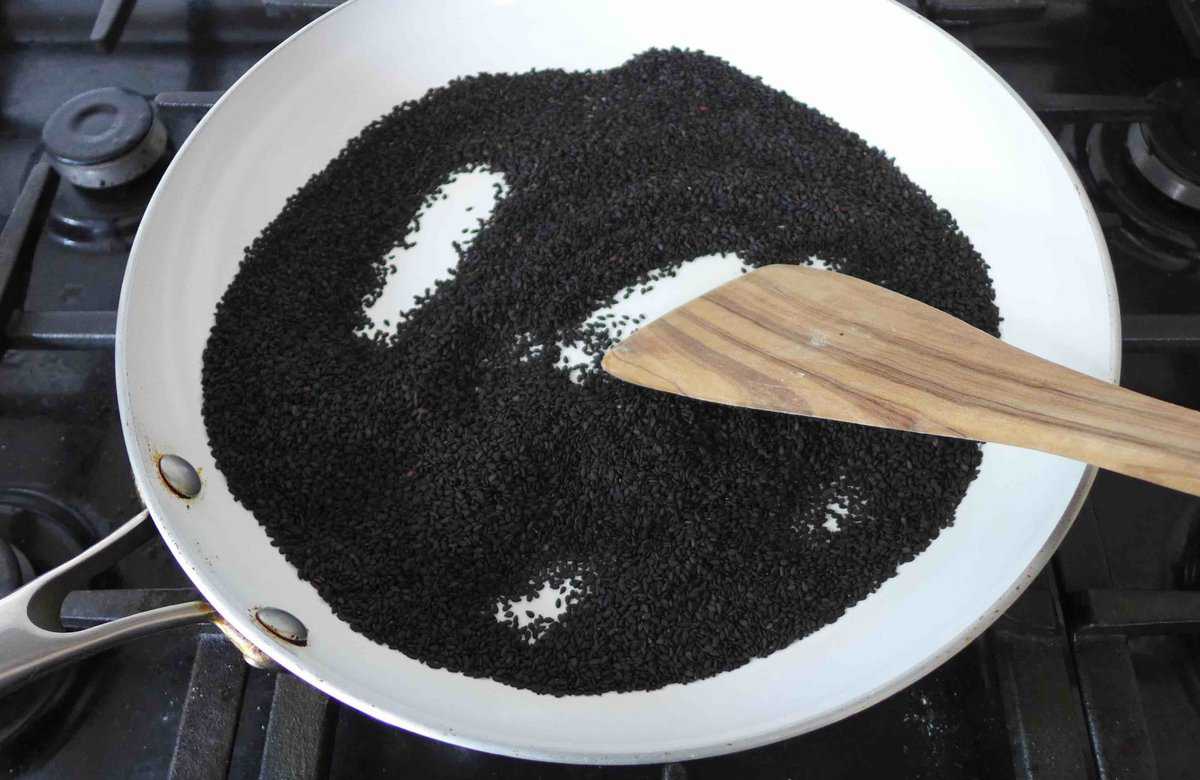
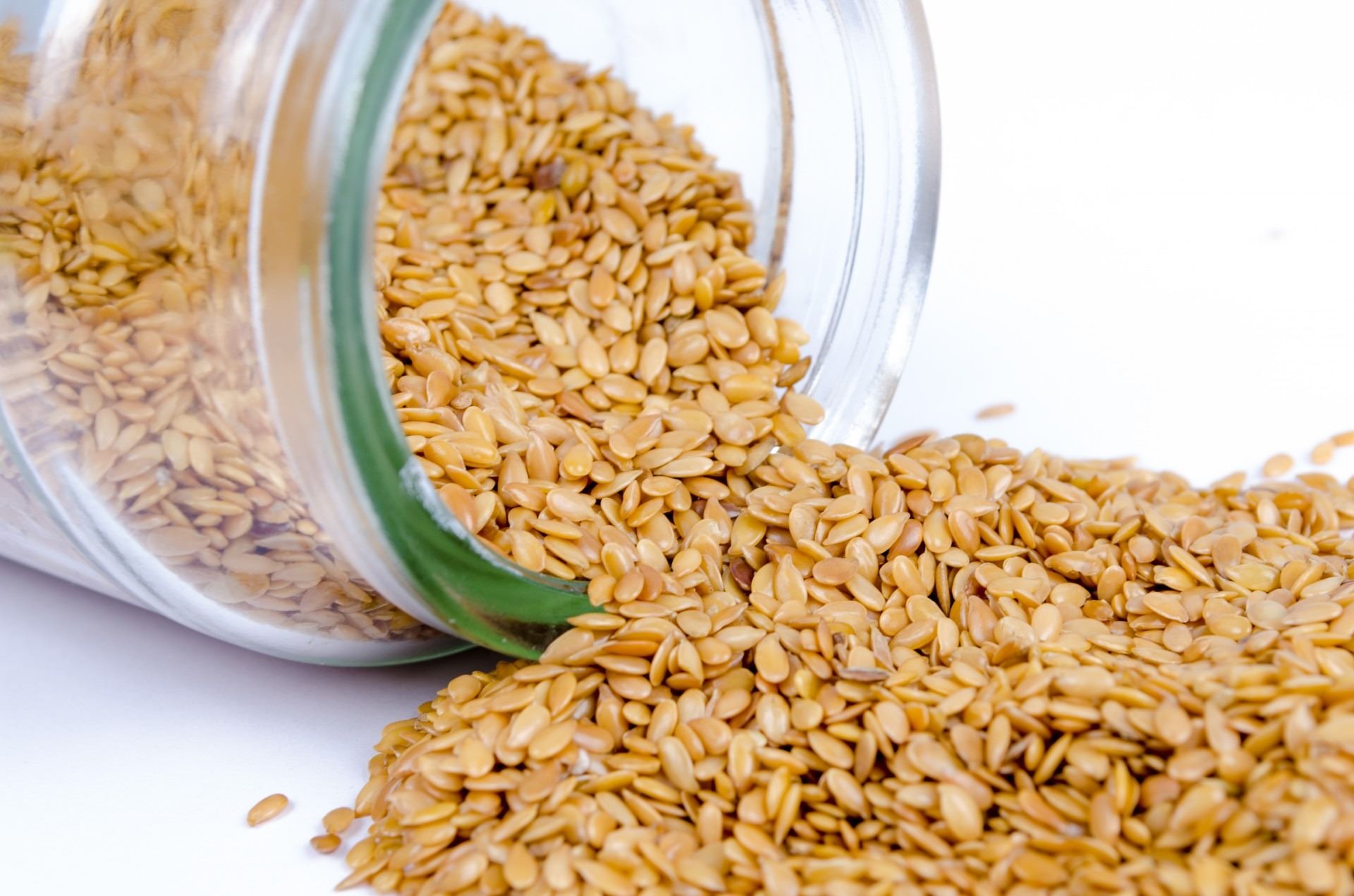
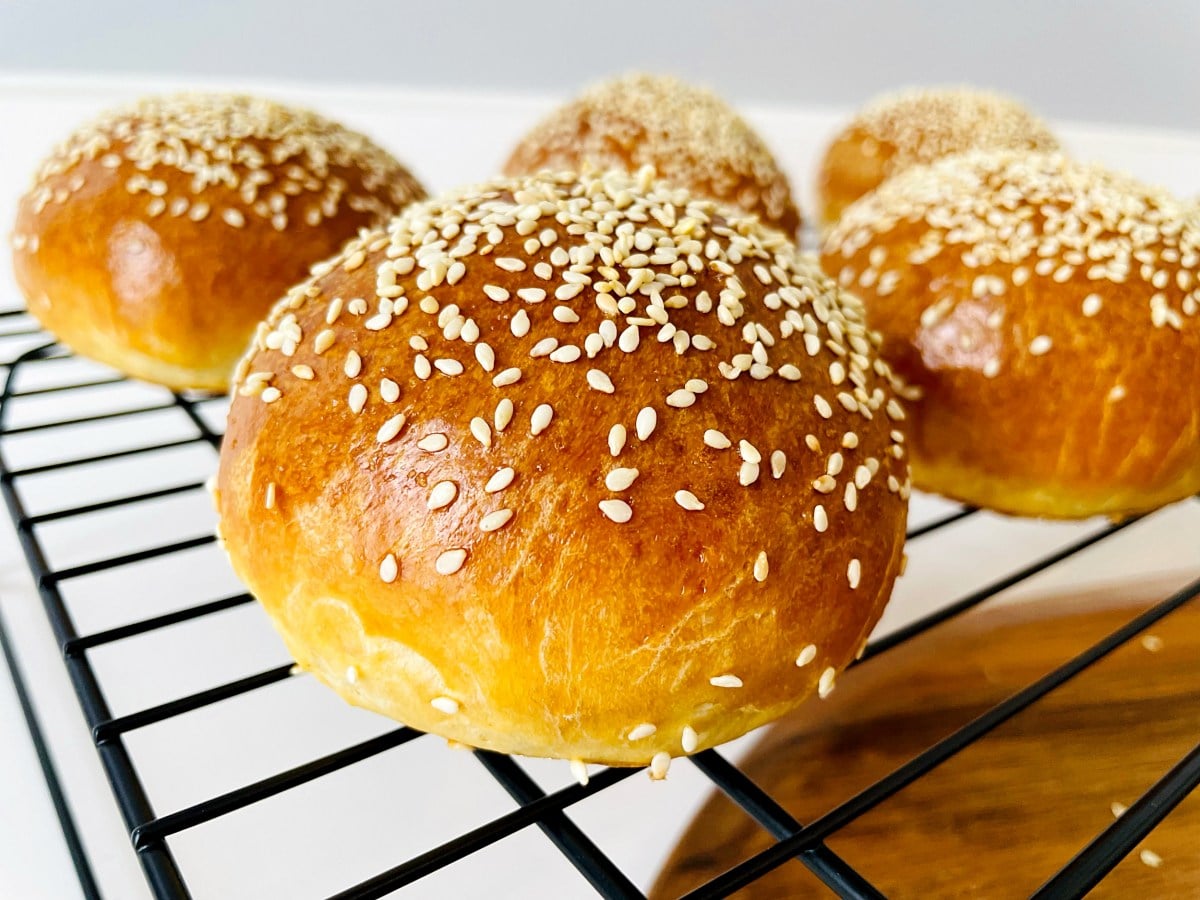
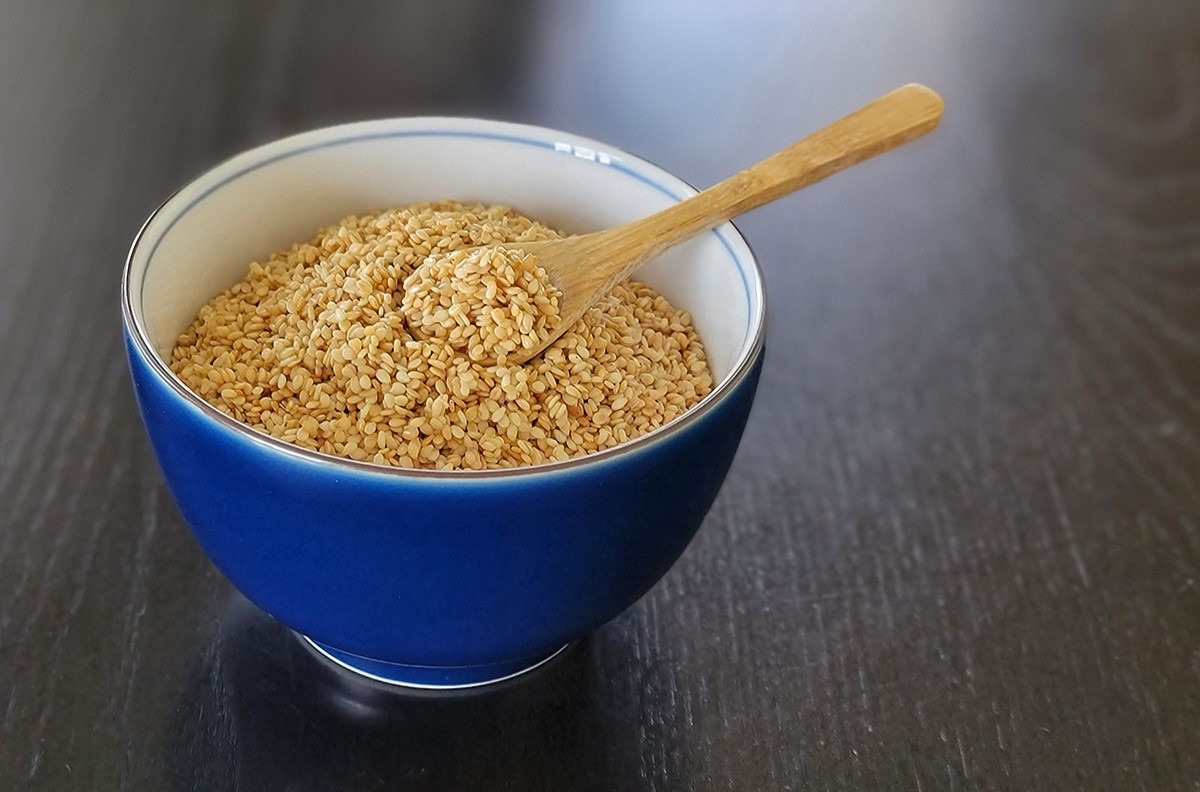

0 thoughts on “How To Store Sesame Seeds”